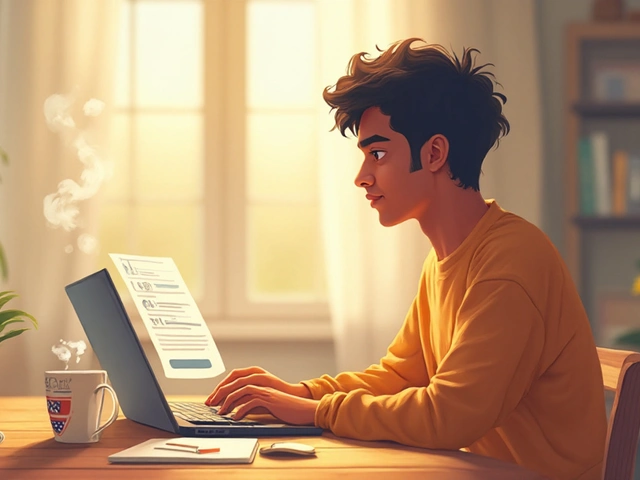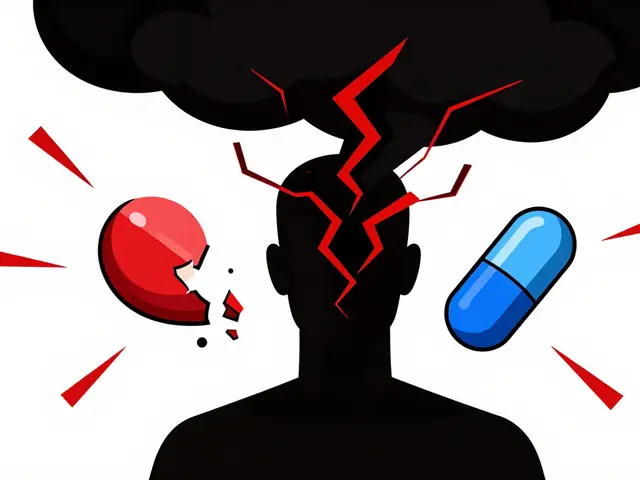People living with Cystic Fibrosis is a genetic disorder that damages the lungs and digestive system. The good news? cystic fibrosis treatment has leapt forward in the last few years, turning a once‑fatal diagnosis into a manageable chronic condition for many. This article breaks down the newest drugs, gene‑editing breakthroughs, and supportive therapies that are reshaping patients’ daily lives.
Quick Takeaways
- Triple‑combo modulators now cover 90% of known CF mutations.
- CRISPR‑based gene editing entered PhaseII trials in 2025.
- mRNA therapy shows 30% improvement in lung function in early studies.
- Inhaled antibiotics and airway‑clearance tech have become more personalized.
- Patients can expect longer survival and better quality of life.
Understanding Cystic Fibrosis and the CFTR Gene
At its core, CF stems from a faulty CFTR gene that encodes a protein responsible for moving chloride ions across cell membranes. When the protein doesn’t work, thick mucus builds up in the lungs, leading to infections, and in the pancreas, hindering digestion.
CFTR Modulators: The Game‑Changing Pillars
CFTR modulators are small molecules that help the defective protein fold correctly or stay open longer, restoring some ion flow. Since the first approval of ivacaftor in 2012, each new generation has broadened mutation coverage and boosted lung function.
What’s New on the Market? A Side‑by‑Side Look
| Modulator | Key Mutations Covered | Approval Year | Average ppFEV1 Gain | Common Side Effects |
|---|---|---|---|---|
| Ivacaftor | G551D, other gating mutations | 2012 | ~10% | Headache, liver‑enzyme elevation |
| Lumacaftor/Ivacaftor (Orkambi) | F508del homozygous | 2015 | ~4% | Respiratory events, rash |
| Tezacaftor/Ivacaftor (Symkevi) | F508del homozygous, some residual function | 2018 | ~6% | Upper‑respiratory infection |
| Elexacaftor/Tezacaftor/Ivacaftor (Trikafta) | F508del (homo/hetero), ~90% of patients | 2019 | ~14% | Diarrhea, rash, elevated LFTs |
| Next‑Gen Triple (2025) | Broad spectrum, including rare splice variants | 2025 (pending) | ~16% | Still under study |
These numbers come from pooled PhaseIII data across multiple centers. The triple‑combo (Trikafta) remains the gold standard, delivering the biggest jump in forced expiratory volume (ppFEV1) and reducing pulmonary exacerbations by roughly 60%.

Gene‑Editing & Gene‑Replacement Therapies
While modulators improve function, they don’t fix the underlying defect. That’s where gene therapy steps in. Two approaches dominate the pipeline:
- CRISPR‑Cas9 editing: Researchers at an Irish university reported successful ex‑vivo editing of patient‑derived airway cells in 2024, correcting the F508del mutation with a 78% efficiency. PhaseII inhaled CRISPR trials launched early 2025, focusing on safety and durability.
- mRNA delivery: A British biotech introduced a lipid‑nanoparticle mRNA that temporarily produces functional CFTR protein. Early‑phase data showed a 30% rise in ppFEV1 after a single dose, with effects lasting up to three weeks.
Both strategies aim for a one‑time or infrequent cure, moving the conversation from “manage” to “potentially eliminate.”
Adjunct Therapies: Keeping the Lungs Clear
Even with modulators, mucus clearance stays critical. New inhaled antibiotics such as liposomal ciprofloxacin deliver higher concentrations directly to biofilms, lowering chronic Pseudomonas colonization. Meanwhile, high‑frequency chest wall oscillation devices have become smarter-integrating Bluetooth to track session length and adjust pressure based on real‑time sputum viscosity.
Nutrition also matters. Pancreatic enzyme formulations enriched with lipase and colo‑tide are now standard, improving fat absorption by 25% compared with older blends.
Practical Checklist for Patients & Families (2025)
- Confirm you’re on the latest approved CFTR modulator-most patients qualify for Trikafta or the 2025 next‑gen triple.
- Schedule quarterly liver‑function tests; modulators can raise enzymes.
- Ask your pulmonologist about enrollment in CRISPR or mRNA trials if you have a rare mutation.
- Use a personalized airway‑clearance routine: oscillatory device + daily physiotherapy.
- Carry a rescue inhaler (tobramycin or aztreonam) and keep sputum cultures up to date.
- Monitor nutritional status; consider high‑fat, enzyme‑supplemented diet.
- Stay current on vaccine recommendations-especially flu and COVID‑19 boosters.
Future Outlook
By 2030, experts predict that at least 80% of CF patients will enjoy a life expectancy beyond 50 years, thanks largely to the combo of modulators and emerging gene therapies. The biggest challenge now is equitable access-high drug costs still limit uptake in low‑income regions.

Frequently Asked Questions
What is the difference between a CFTR modulator and gene therapy?
CFTR modulators are small‑molecule drugs that help the defective protein work better. Gene therapy tries to correct or replace the faulty gene itself, aiming for a long‑term or permanent fix.
Can adults start on Trikafta if they never took a modulator before?
Yes. Clinical trials showed that even patients who began treatment in their 30s experienced meaningful lung‑function gains and fewer exacerbations.
Are the new CRISPR trials safe?
PhaseI data reported no serious adverse events, but long‑term monitoring is essential. The trials use a localized inhaled delivery to limit off‑target effects.
How often should I have liver‑function tests while on modulators?
Guidelines recommend baseline testing, then every 3months for the first year, followed by semi‑annual checks if results remain stable.
Do inhaled antibiotics replace oral antibiotics?
Inhaled formulations target the lungs directly and are usually preferred for chronic suppression of Pseudomonas. Oral antibiotics are still used for systemic infections.







Shriniwas Kumar
September 28, 2025 AT 09:58From a translational pharmacogenomics perspective, the advent of next‑gen triple modulators epitomizes a paradigm shift; we’re witnessing an allosteric potentiation of CFTR gating coupled with proteostasis correction, effectively expanding therapeutic coverage to rare splice variants via a synergistic heterodimeric complex.
Jennifer Haupt
October 1, 2025 AT 08:26It is heartening to see the collective scientific community rally around inclusive access to these life‑extending treatments, yet we must remain vigilant and demand equitable pricing structures worldwide, for no breakthrough truly benefits humanity if it remains out of reach for the underserved.
NANDKUMAR Kamble
October 4, 2025 AT 08:40Everything they tell us about gene editing is a massive cover‑up.
namrata srivastava
October 7, 2025 AT 08:53One must acknowledge the exquisite mechanistic nuance embedded within the ex‑vivo CRISPR‑Cas9 platform; its vectorial delivery paradigm transcends conventional viral vectors, thereby mitigating immunogenicity while optimizing allelic correction fidelity.
Priyanka arya
October 10, 2025 AT 09:06Wow, the mRNA therapy data is 🔥! 30% improvement is massive, and the fact it’s a few weeks long means we might finally see a real boost without daily pills 🙌.
Loren Kleinman
October 13, 2025 AT 09:20The trajectory of cystic fibrosis management over the past decade has been nothing short of revolutionary, as we moved from symptomatic palliative care to molecularly targeted interventions. The introduction of ivacaftor marked the first glimpse of precision medicine in this field, opening doors for subsequent combinatorial regimens. Each successive generation of modulators has built upon that foundation, incrementally expanding the mutation spectrum covered. Trikafta, with its triple‑component architecture, demonstrated that synergistic pharmacodynamics could translate into tangible clinical gains for the majority of patients. Yet, the story does not end there; the emergence of gene‑editing strategies promises a paradigm where the underlying genetic defect may be corrected outright. CRISPR‑Cas9, delivered via inhalation, seeks to edit airway epithelial cells in situ, thereby addressing the root cause rather than its downstream manifestations. Parallel to this, mRNA therapeutics aim to transiently express functional CFTR protein, granting patients episodic improvements without lifelong drug exposure. These approaches, while still nascent, underscore a shift from chronic management to potential curative intent. Equally vital are the adjunctive technologies that maintain airway clearance, such as Bluetooth‑enabled oscillatory devices that personalize pressure settings in real time. Nutritional optimization, through advanced pancreatic enzyme formulations, further bolsters overall health and quality of life. As we look toward 2030, the confluence of these advances suggests that many patients will surpass the half‑century survival milestone, living fuller, more active lives. However, the societal challenge of ensuring global accessibility remains daunting, demanding coordinated policy and pricing reforms. In sum, the multifaceted progress-from modulators to gene therapies-heralds a hopeful horizon for the cystic fibrosis community.
Sabrina Goethals
October 16, 2025 AT 09:33Interesting, read the article, and i cant help but notice how the new inhaled antibiotics are, like, a game‑changer, you know, especially for ppl dealing with chronic pseudomonas, also the bluetooth chest vests are super cool, but lets be real, the cost is still a major barrier.
Sudha Srinivasan
October 19, 2025 AT 09:46People need to stop ignoring the liver‑function monitoring; it's non‑negotiable.
Jenny Spurllock
October 22, 2025 AT 10:00The integration of personalized airway‑clearance regimens with modulators seems to be the most pragmatic way to sustain lung health over the long term.
Bart Cheever
October 25, 2025 AT 10:13Honestly, the article spouts hype; the data on mRNA therapy is still early and not ready for prime time.
Maude Rosièere Laqueille
October 28, 2025 AT 09:26For anyone starting a new regimen, remember to schedule baseline liver tests, then repeat every three months during the first year; this catches any enzyme elevations before they become problematic.
Melissa H.
October 31, 2025 AT 09:40Make sure you ask your pulmonologist about enrollment in the CRISPR trials if you have a rare mutation – it could be a game‑changer for you 😊.
Edmond Abdou
November 3, 2025 AT 09:53Stay positive, stay informed, and keep your care team in the loop – together you’ll navigate these advances 👍.
Sydnie Baker
November 6, 2025 AT 10:06One must not overlook the profound ontological implications of redefining cystic fibrosis from a terminal phenotype to a chronic, manageable condition via pharmacologic chaperoning and genomic rectification.
Benjie Gillam
November 9, 2025 AT 10:20From a systems‑biology angle, the synergy between CFTR modulators and emerging mRNA platforms could usher in a new era of combinatorial therapy, balancing durability with safety.
Naresh Sehgal
November 12, 2025 AT 10:33Don't settle for outdated meds – push for the next‑gen triple if you're eligible, and keep up with quarterly check‑ins; your lungs will thank you!
Danny Wakefield
November 15, 2025 AT 10:46Honestly, the whole “CRISPR will fix everything” narrative feels like a scripted distraction, but if you’re brave enough to explore it, just stay on top of the safety data – it’s the only way to protect yourself.